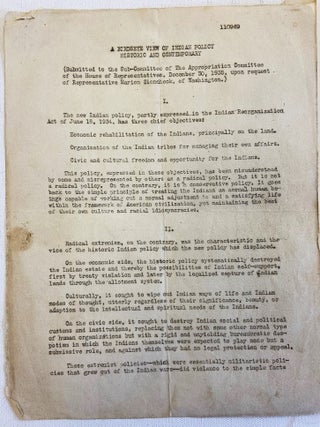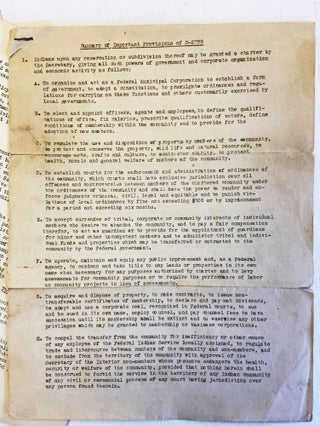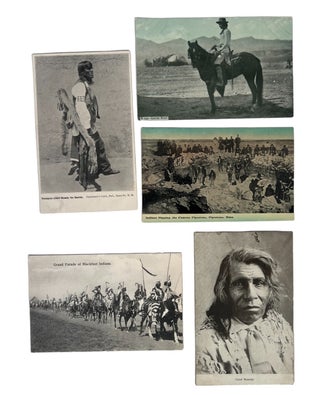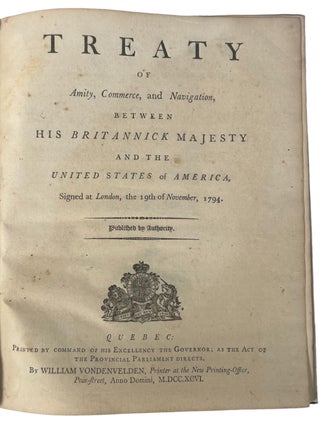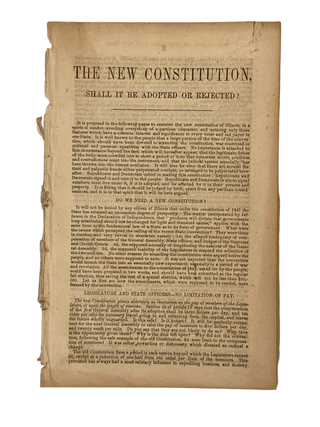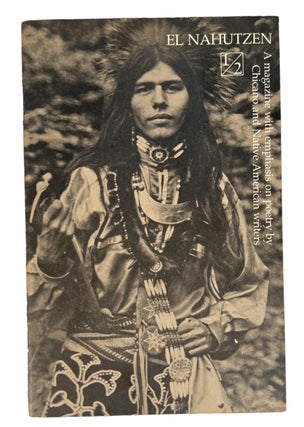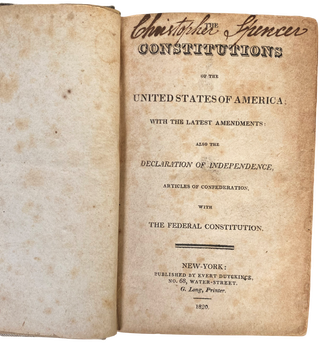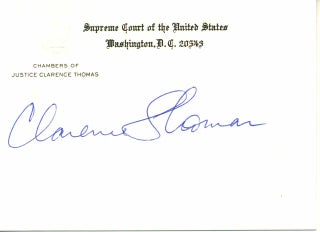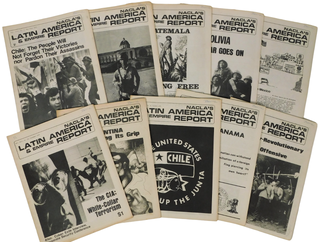Report on the 1934 Bill that Increased Native American Tribal Self Determination From its Architect
A Birdseye View of Indian Policy Historic and Contemporary. An early report on the purpose and progress of the Indian Reorganization Act of 1934 ("IRA"). 10.5" x 8" inches. Photomechanically reproduced typescript. 14 one sided loose leaves. Also included is an addendum of two stapled leaves entailing a "Summary of Important Provisions of S-2755." The report was written by John Collier, the Commissioner for the Bureau of Indian Affairs from 1933-1945 and the founder of the American Indian Defense Association which fought to protect Native Americans' religious freedom and tribal lands. His tenure and the policies pursued under it are often referred to as the "Indian New Deal", not only because these policies were enacted concurrently with FDR's New Deal but also because they resembled the depth and vision of the New Deal. One such policy was the Indian Reorganization Act, where Collier was a prime mover. The IRA's major goal was to reverse the government's approach of assimilation of Native Americans into American society as well as its treatment of their lands. It sought to strengthen tribes and help them preserve their traditions and culture. This paper was written approximately 18 months after the effective date of the act and appears to be an attempt by Collier to further explain its purpose and silence critics. The paper was submitted to the House Appropriations Committee in December 1935. Collier started by saying the IRA was not a radical policy but "a simple principle of treating the Indians as normal human beings capable of working out a normal adjustment to and a satisfying life within the framework of American civilization, yet maintaining the best of their own culture and racial idiosyncrasies. " He argued that the former policy was an extremist and militaristic approach that grew out of the Indian Wars, and that it "thrust the Indians into an economic, spiritual, and social no-man's land. " He discussed various aspects of the old policy such as treaty breaking and expropriation of land through allotment, and provided great detail on the failure of those policies, ultimately calling them "a crude and cruel point of view based on the attitude that the Indians at their worst were dangerous savages and at their best were immeasurably inferior to whites. " He went on to explain how the IRA was fixing those ills, and would continue to fix them, as well as provide some form of restitution for past harm. He also shared the generally positive response to the IRA by Native Americans, as well as heartening socioeconomic statistics from its early implementation. The addendum on S-2755 highlights key provisions from the bill that bolstered tribes right to self-government and economic enterprise. At the time that this description was written, OCLC locates ten physical copies over three entries. An important explanation of the Indian Reorganization Act soon after its enactment, with arguments justifying its existence and documenting its early successes, written by the man who brought it into existence. There are a few creases from folding and some light, occasional soiling but this piece is overall in very good condition.
Item #17749
Price: $1,250.00


